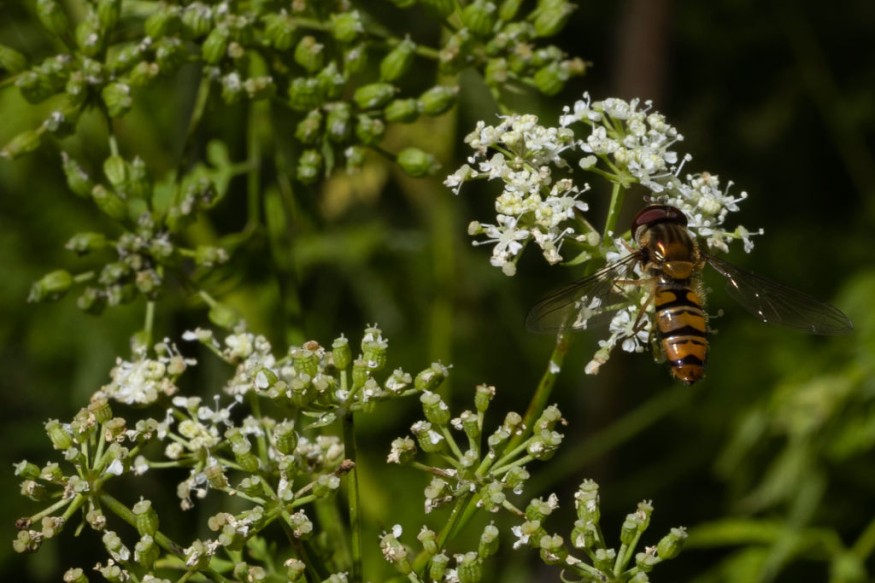
In Texas, a homeowner mistook a poison hemlock for a wildflower, and was taken to the emergency room due to the toxic plant.
A gorgeous but lethal plant has been seen flourishing in the Lone Star State.
Kenzie Kizer, a resident of the Dallas suburb of Lancaster, Texas, turned to social media on Sunday to warn others of certain weeds she had been trying to pluck and get rid of when she almost died.
Over 100,000 people have shared the Facebook post that said, "Shortly after pulling the weeds, my arms felt as if they were on fire," where she also says she took a shower to wash off what she assumed were splinters.
Less than an hour later, according to Kizer, she started experiencing swelling in her tongue, burning in her skin, slurred speech, dizziness, confusion, and trembling.
She began to experience breathing difficulty and a constriction in her chest.
Kizer was taken to the hospital's emergency room and discovered that the poison hemlock plant was to blame for the symptoms she was having.
Later, she said that choosing to take a shower saved her life and made what may have otherwise resulted in tragedy into a "mild" reaction.
Later, Kizer posted a warning to her social media followers advising them not to touch or even approach the object if they encounter it in their own yard.
Posin Hemlock and Wildflowers
Despite having the appearance of being innocuous wildflowers, poison hemlock is actually quite deadly throughout, with its leaves and stems being the most dangerous.
Hemlock poison may be harmful to both people and animals if consumed.
When poison hemlock is consumed by animals, respiratory paralysis can cause death in two to three hours.
A human can pass away in just two hours after consuming anywhere from six to eight fresh leaves.
However, poisoning can also happen if you come into touch with it or breathe in its vapors
The plants have thick, upright, hollow stems that are light green in color with purple streaks or spots that may be present. Its white flowers are grouped in umbrella-shaped clusters and typically bloom from late spring to early summer.
The fruit is a green, heavily ridged fruit that becomes grayish brown as it ages.
According to Texas A&M AgriLife's Brandi Keller, a horticulture agent in Harris County, they resemble Queen Anne's lace, which has a flatter, umbrella-like appearance than poison hemlock, which is more curled.
Hemlock may reach heights of three to nine feet, whereas Queen Anne's lace also reaches heights of one to three feet.
According to Keller, the stem of Queen Anne's lace is fluffy and green.
Smooth stems with purple splotches are a sign of poison hemlock. The leaves might be mistaken for Queen Anne's lace or carrots, so identifying them that way might not be helpful, and rather misleadingly dangerous.
Invasive Species
According to Texas Invasives, the invasive poison hemlock is a Eurasian species that was introduced to the country as an ornamental plant because of its lovely white blooms.
The plants, which thrive in wet soil and enjoy full sun to moderate shade, are frequently seen in the bottomlands and rivers of the Edwards Plateau.
In the southern part of Texas, there are thick stands along stream banks and ditches by the side of the road.
Harris County has not received any official complaints of poison hemlock growing there, however, a distribution map for invasive species from 2010 indicated the presence of one plant in the area.
A plant was also noted in Tarrant County in north Texas the same year.
Taking Out Poison Hemlock
When near poison hemlock, Keller advised wearing protective gloves, trousers, long sleeves, and shoes.
Dig up the entire plant, including the tap root, and dispose of it with other yard garbage if you want to get rid of it.
Keller also advised against mowing, weed-whacking, and burning plants since these activities might expose the skin, eyes, and lungs to particulates, The Houston Chronicle reported.
Related Article : Poisonous Gympie-Gympie Plant Takes Mother Down with the Worst Pain
© 2026 NatureWorldNews.com All rights reserved. Do not reproduce without permission.





